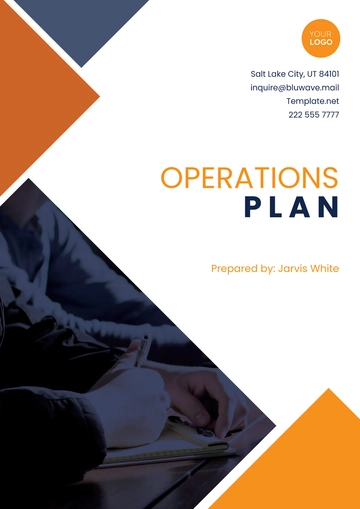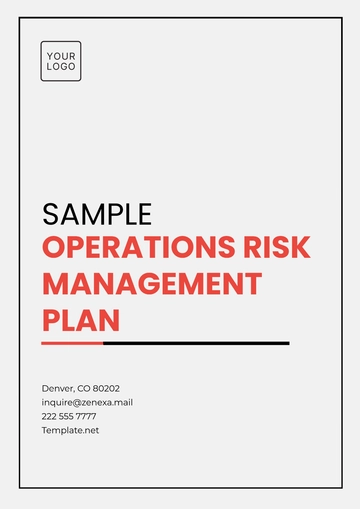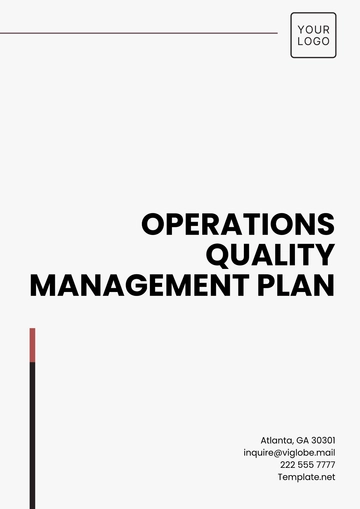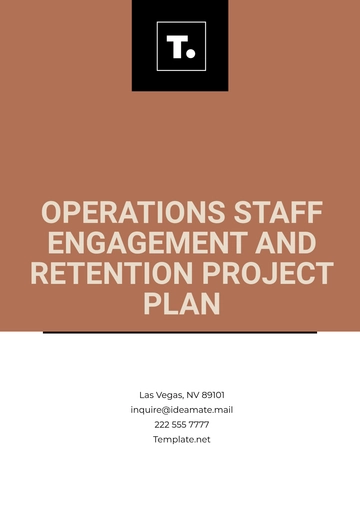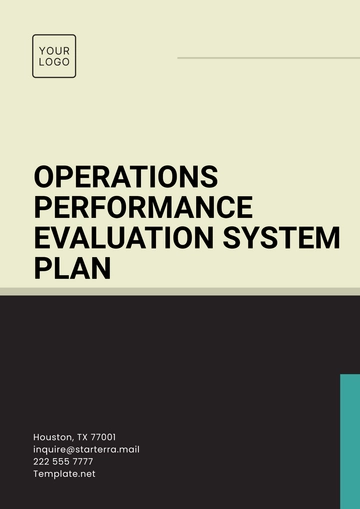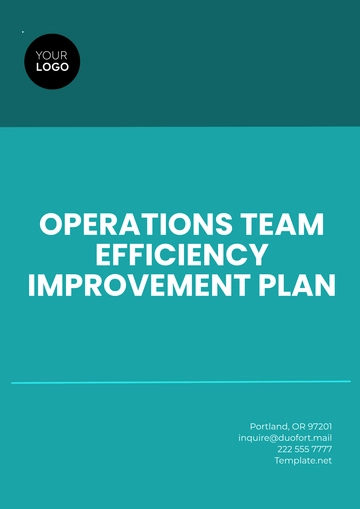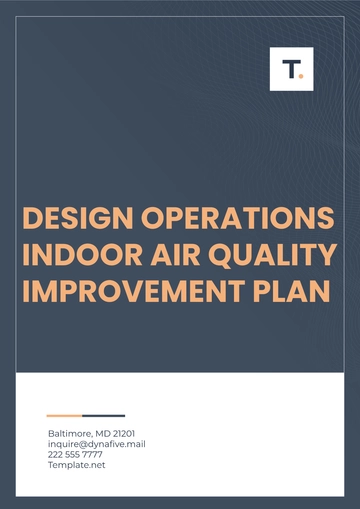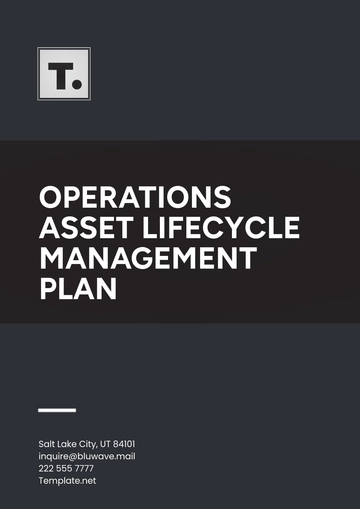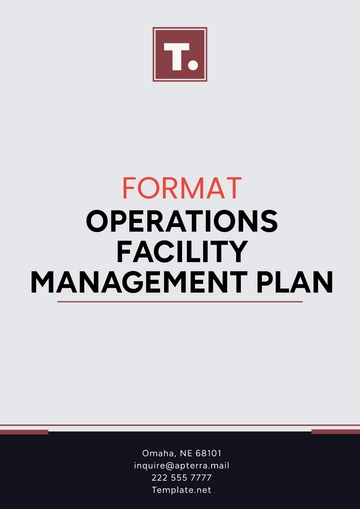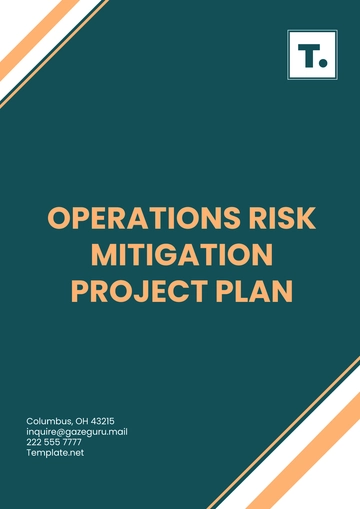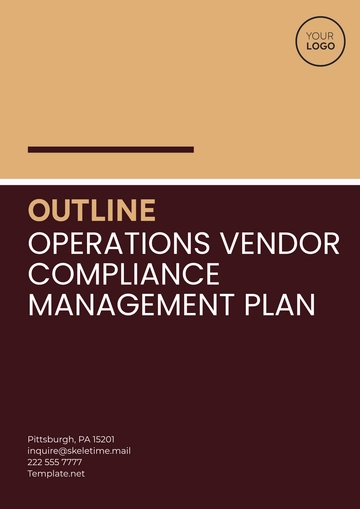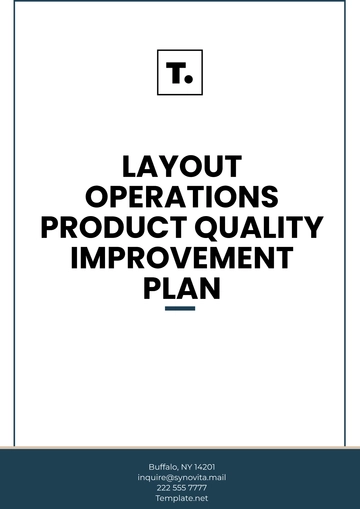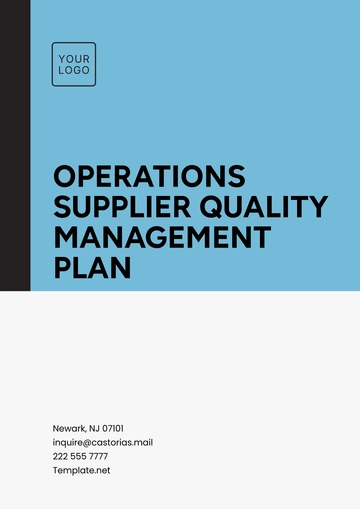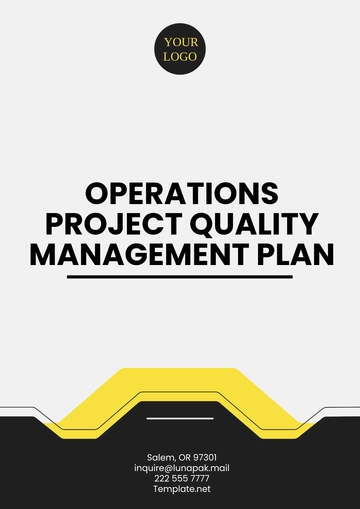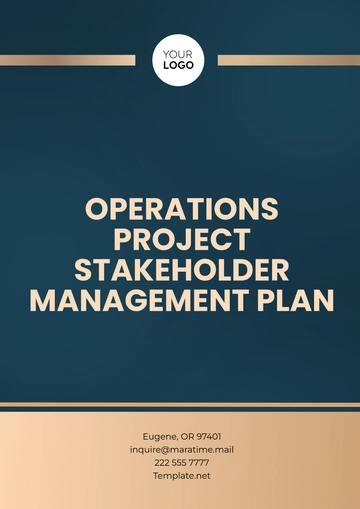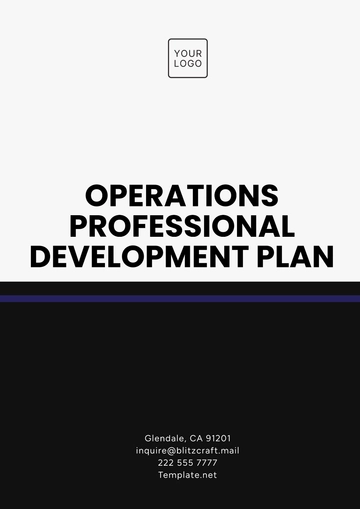Free Health & Safety Committee Operations Plan
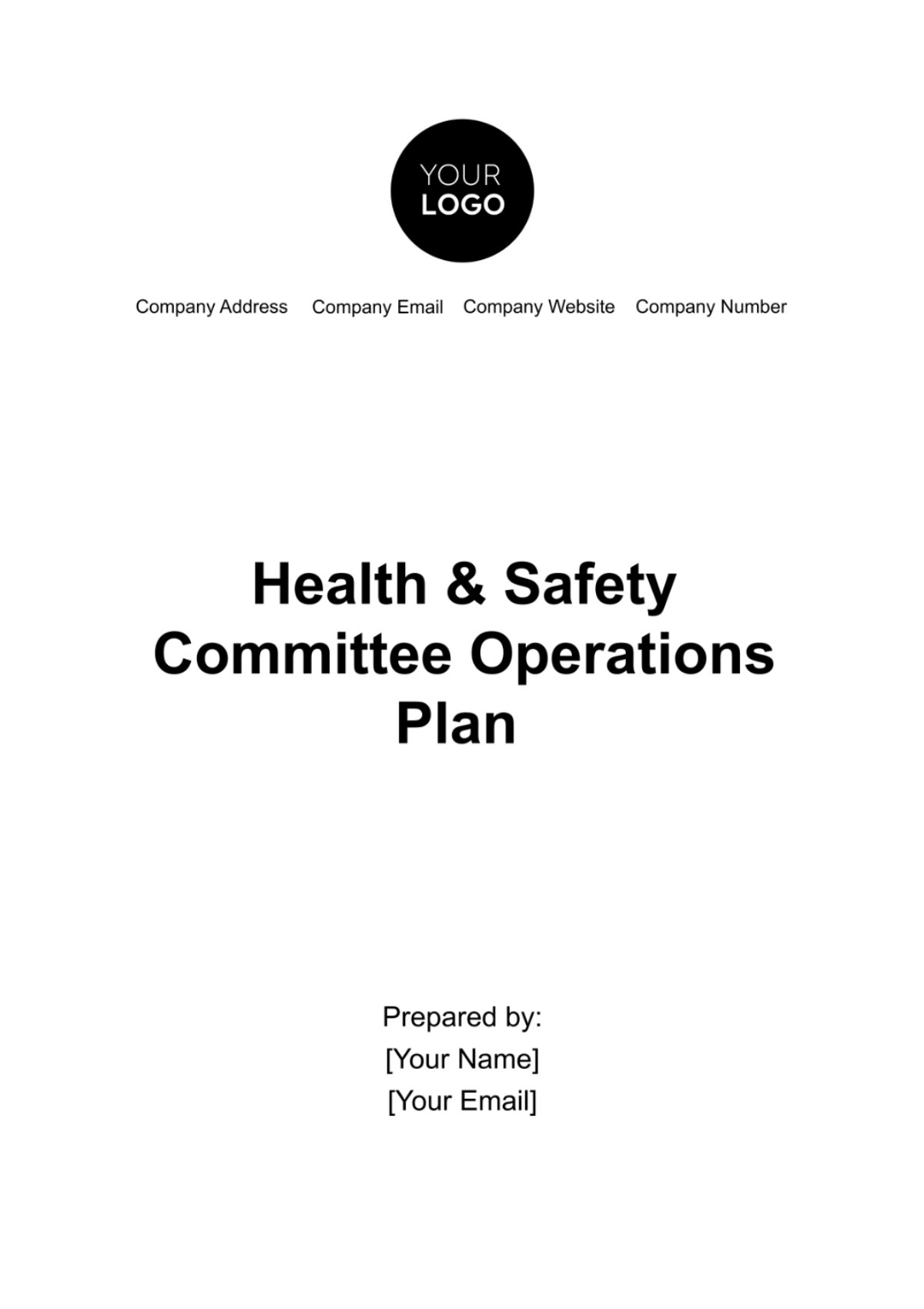
Introduction
Welcome to the Health & Safety Committee Operations Plan. This document serves as a guiding framework for the Committee, dedicated to ensuring the safety and well-being of all employees in our organization. The purpose of this plan is to outline the structure, roles, responsibilities, and procedures of the Health & Safety Committee. We recognize that a safe work environment is not only a regulatory requirement but also a foundation for the well-being and productivity of our staff. By implementing this plan, we aim to foster a culture of safety awareness, encourage proactive safety practices, and ensure efficient response to any safety concerns that arise. The Committee's commitment to these objectives is pivotal in maintaining a secure and health-conscious workplace for everyone.
Committee Composition
Members
The Health & Safety Committee is a diverse group of individuals who bring various perspectives and expertise to the committee. The composition is as follows:
Chairperson: Elected from among the members, responsible for steering the committee's direction.
Secretary: Appointed to handle documentation and communication.
Employee Representatives: Two members from each department, ensuring a broad representation.
Management Representatives: Includes the Head of Operations and the HR Manager.
Selection Process
Member Role | Selection Criteria | Nomination Process | Term Length |
Chairperson | Demonstrated leadership in safety initiatives, excellent communication skills | Elected by committee members | 2 years |
Secretary | Organizational skills, experience in documentation | Appointed by Chairperson | 2 years |
Employee Representatives | Interest in health and safety, peer recognition | Nominated by department, voted by departmental staff | 1 year |
Management Representatives | Seniority, involvement in safety policy-making | Appointed by company leadership | 2 years |
Roles and Responsibilities
Chairperson
The Chairperson leads the committee, ensuring that it functions effectively and achieves its objectives. Key responsibilities include:
Setting the agenda for meetings.
Leading discussions and ensuring every member has a voice.
Liaising with management and reporting on the committee's progress.
Overseeing the implementation of safety initiatives.
Secretary
The Secretary is pivotal in managing the committee's documentation and communication. Responsibilities include:
Recording minutes of each meeting.
Circulating agendas and minutes to all members.
Maintaining an up-to-date record of health and safety documentation.
Managing the committee's internal and external correspondence.
Members
All members play a critical role in the committee’s effectiveness. Their responsibilities involve:
Actively participating in meetings and discussions.
Providing insights and feedback from their respective departments.
Assisting in the implementation of health and safety policies within their departments.
Reporting any health and safety concerns to the committee.
Meeting Operations
Frequency and Duration
The Committee will hold regular meetings to ensure ongoing attention to health and safety issues. The following table outlines the meeting schedule:
Meeting Type | Frequency | Duration | Tentative Dates |
Regular Meetings | Monthly | 1 Hour | First Tuesday of each month |
Emergency Meetings | As needed | 1-2 Hours | Scheduled within 48 hours of an incident |
Annual General Meeting | Annually | 2 Hours | December 10th each year |
Agenda Setting
Agendas for regular meetings are set one week in advance. Members are encouraged to submit items for discussion to the Secretary. The Chairperson finalizes the agenda, ensuring a balance between ongoing projects and new concerns. Key agenda items typically include:
Review of recent incident reports and follow-up actions.
Updates on ongoing safety initiatives.
Discussion of new safety concerns raised by members.
Planning for upcoming training and awareness programs.
Health & Safety Audits
Audit Schedule
Health and safety audits are critical for identifying potential hazards and ensuring compliance with safety regulations. The annual audit schedule is as follows:
Month | Focus Area | Responsible Team |
January | Emergency Response Procedures | Operations Team |
April | Workplace Ergonomics | HR and Admin Team |
July | Machinery and Equipment Safety | Maintenance Team |
October | Environmental Health and Safety | Sustainability Team |
Reporting
The findings from each audit are compiled into a detailed report by the responsible team. Key components of the report include:
Executive Summary: Overview of the audit findings.
Detailed Observations: Specific details on each area examined.
Recommendations: Suggestions for improvement and corrective actions.
Follow-Up Plan: Timeline and responsibility for implementing recommendations.
After the report is compiled, it is presented to the Health & Safety Committee for review in the subsequent meeting. The committee discusses the report and decides on the necessary actions. A follow-up report is then prepared by the responsible team, detailing the progress on the implementation of the recommendations. This report is reviewed in the following quarterly meeting to ensure accountability and effectiveness of the actions taken.
Training and Awareness Programs
Training Schedule
Effective training is essential for maintaining a safe work environment. The committee organizes various training programs throughout the year. The schedule is as follows:
Month | Training Topic | Target Group | Duration |
February | Fire Safety and Evacuation | All Employees | 2 hours |
May | First Aid and CPR | First Aid Team | 4 hours |
August | Hazardous Material Handling | Maintenance Staff | 3 hours |
November | Stress Management and Mental Health | All Employees | 2 hours |
Awareness Initiatives
Alongside formal training, the committee will also conduct awareness initiatives to keep health and safety at the forefront of everyone's minds. These initiatives include:
Monthly Safety Bulletins: A brief newsletter highlighting safety tips, recent incidents, and lessons learned.
Safety Spotlights: Regular emails featuring a specific safety topic, such as ergonomic practices or mental health awareness.
Annual Safety Week: A week-long event with activities, workshops, and guest speakers focused on promoting a culture of safety.
Incident Reporting and Investigation
Reporting Procedure
Timely and accurate reporting of incidents is critical. The following outlines the procedure:
Immediate Response: Any incident must be reported immediately to the supervisor.
Incident Report Form: The involved personnel or witnesses should fill out an Incident Report Form within 24 hours of the incident.
Preliminary Review: The Health & Safety Committee reviews the report to determine the need for a full investigation.
Investigation Protocol
A systematic approach is essential for investigating incidents. The protocol includes:
Formation of Investigation Team: A team, led by a committee member and including relevant personnel, is formed.
Data Collection: Gathering all relevant information, including witness statements and environmental conditions.
Analysis: Identifying the root cause of the incident.
Report Preparation: Documenting findings, conclusions, and recommendations.
Follow-Up: Ensuring implementation of recommendations and monitoring for effectiveness.
Step | Description | Responsible Party | Timeline |
Formation of Team | Selecting investigation team members | Committee Chairperson | Within 48 hours of incident |
Data Collection | Gathering evidence and statements | Investigation Team | 1 week post-incident |
Analysis | Analyzing data to determine cause | Investigation Team | 2 weeks post-incident |
Report Preparation | Documenting findings and recommendations | Investigation Team | 3 weeks post-incident |
Follow-Up | Implementing and monitoring recommendations | Health & Safety Committee | Ongoing post-report |
Conclusion
This Health & Safety Committee Operations Plan establishes a comprehensive approach to managing and promoting workplace safety. The structured composition of the committee, regular meetings, detailed audits, targeted training programs, and thorough incident reporting and investigation procedures collectively contribute to a robust safety culture. The success of this plan depends on the active participation, commitment, and collaboration of all committee members, employees, and management. By adhering to and continually improving upon these guidelines, the committee will make significant strides towards ensuring a safer, healthier work environment for all. This plan is not only a commitment to safety but also a testament to our organization's dedication to its most valuable asset – its people.
- 100% Customizable, free editor
- Access 1 Million+ Templates, photo’s & graphics
- Download or share as a template
- Click and replace photos, graphics, text, backgrounds
- Resize, crop, AI write & more
- Access advanced editor
Introducing Template.net's Health & Safety Committee Operations Plan Template. Editable and customizable, this tool enables seamless planning and execution of safety committee operations. Utilize our Ai Editor Tool to tailor the plan to your organization's specific needs. Safeguard workplace well-being effectively with Template.net's innovative solution.
You may also like
- Finance Plan
- Construction Plan
- Sales Plan
- Development Plan
- Career Plan
- Budget Plan
- HR Plan
- Education Plan
- Transition Plan
- Work Plan
- Training Plan
- Communication Plan
- Operation Plan
- Health And Safety Plan
- Strategy Plan
- Professional Development Plan
- Advertising Plan
- Risk Management Plan
- Restaurant Plan
- School Plan
- Nursing Home Patient Care Plan
- Nursing Care Plan
- Plan Event
- Startup Plan
- Social Media Plan
- Staffing Plan
- Annual Plan
- Content Plan
- Payment Plan
- Implementation Plan
- Hotel Plan
- Workout Plan
- Accounting Plan
- Campaign Plan
- Essay Plan
- 30 60 90 Day Plan
- Research Plan
- Recruitment Plan
- 90 Day Plan
- Quarterly Plan
- Emergency Plan
- 5 Year Plan
- Gym Plan
- Personal Plan
- IT and Software Plan
- Treatment Plan
- Real Estate Plan
- Law Firm Plan
- Healthcare Plan
- Improvement Plan
- Media Plan
- 5 Year Business Plan
- Learning Plan
- Marketing Campaign Plan
- Travel Agency Plan
- Cleaning Services Plan
- Interior Design Plan
- Performance Plan
- PR Plan
- Birth Plan
- Life Plan
- SEO Plan
- Disaster Recovery Plan
- Continuity Plan
- Launch Plan
- Legal Plan
- Behavior Plan
- Performance Improvement Plan
- Salon Plan
- Security Plan
- Security Management Plan
- Employee Development Plan
- Quality Plan
- Service Improvement Plan
- Growth Plan
- Incident Response Plan
- Basketball Plan
- Emergency Action Plan
- Product Launch Plan
- Spa Plan
- Employee Training Plan
- Data Analysis Plan
- Employee Action Plan
- Territory Plan
- Audit Plan
- Classroom Plan
- Activity Plan
- Parenting Plan
- Care Plan
- Project Execution Plan
- Exercise Plan
- Internship Plan
- Software Development Plan
- Continuous Improvement Plan
- Leave Plan
- 90 Day Sales Plan
- Advertising Agency Plan
- Employee Transition Plan
- Smart Action Plan
- Workplace Safety Plan
- Behavior Change Plan
- Contingency Plan
- Continuity of Operations Plan
- Health Plan
- Quality Control Plan
- Self Plan
- Sports Development Plan
- Change Management Plan
- Ecommerce Plan
- Personal Financial Plan
- Process Improvement Plan
- 30-60-90 Day Sales Plan
- Crisis Management Plan
- Engagement Plan
- Execution Plan
- Pandemic Plan
- Quality Assurance Plan
- Service Continuity Plan
- Agile Project Plan
- Fundraising Plan
- Job Transition Plan
- Asset Maintenance Plan
- Maintenance Plan
- Software Test Plan
- Staff Training and Development Plan
- 3 Year Plan
- Brand Activation Plan
- Release Plan
- Resource Plan
- Risk Mitigation Plan
- Teacher Plan
- 30 60 90 Day Plan for New Manager
- Food Safety Plan
- Food Truck Plan
- Hiring Plan
- Quality Management Plan
- Wellness Plan
- Behavior Intervention Plan
- Bonus Plan
- Investment Plan
- Maternity Leave Plan
- Pandemic Response Plan
- Succession Planning
- Coaching Plan
- Configuration Management Plan
- Remote Work Plan
- Self Care Plan
- Teaching Plan
- 100-Day Plan
- HACCP Plan
- Student Plan
- Sustainability Plan
- 30 60 90 Day Plan for Interview
- Access Plan
- Site Specific Safety Plan
